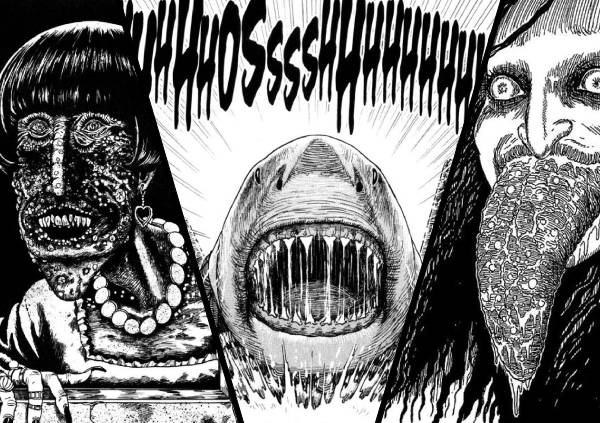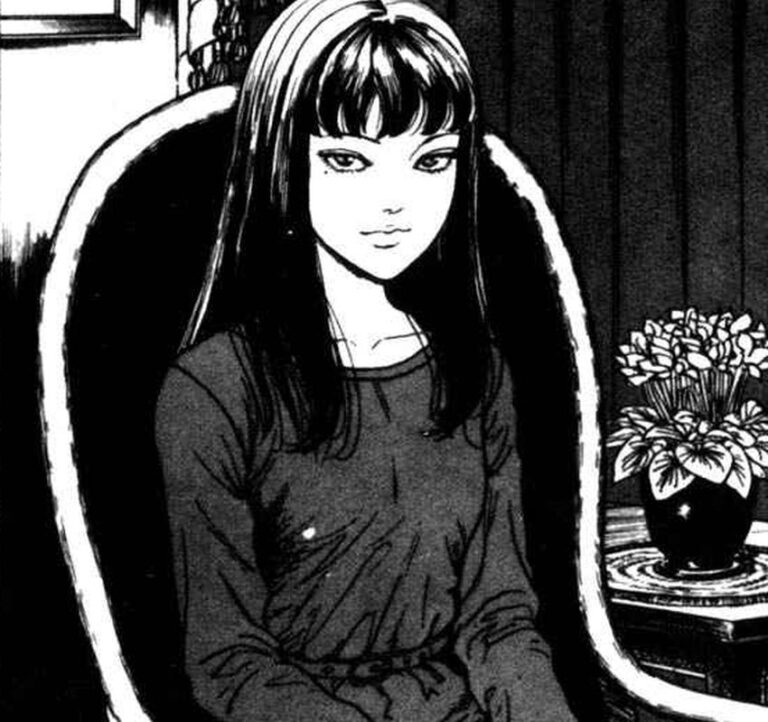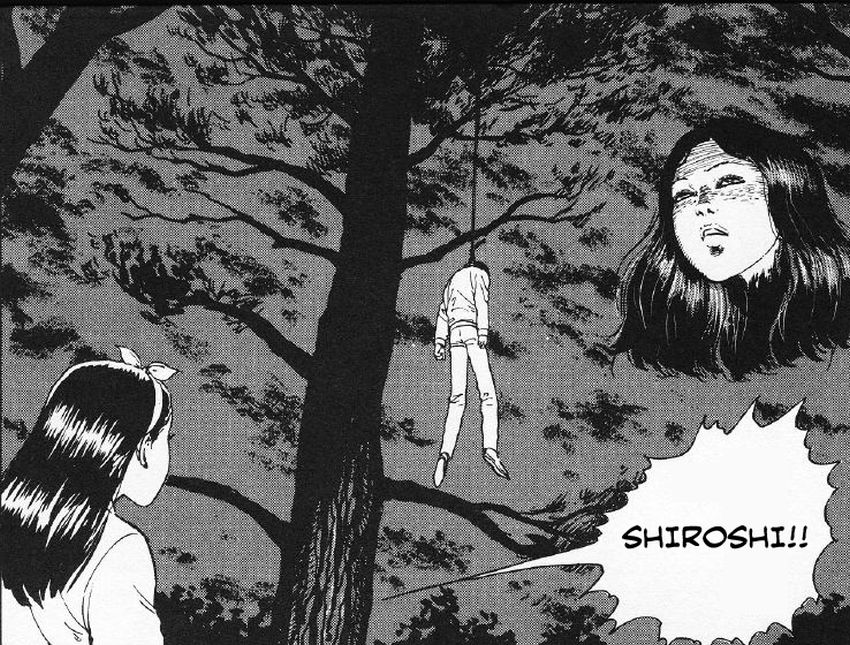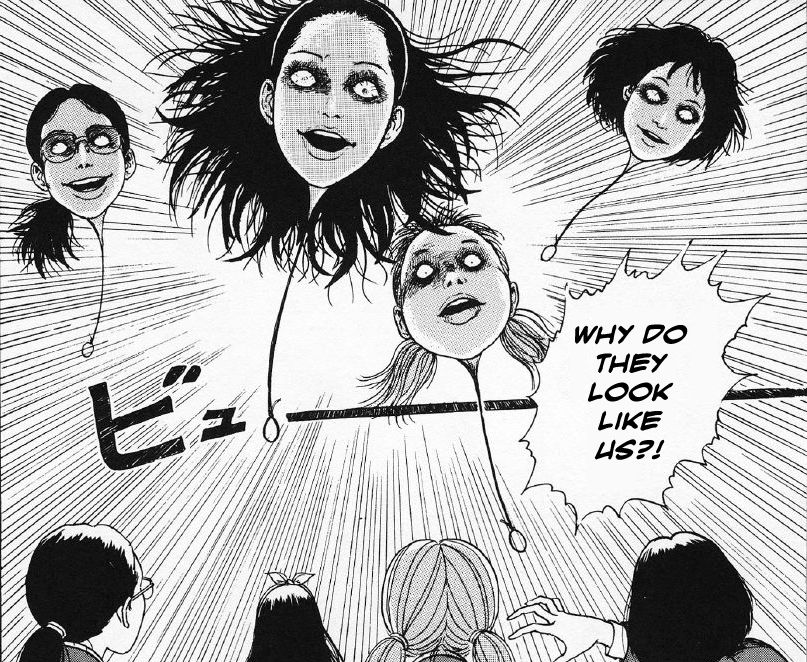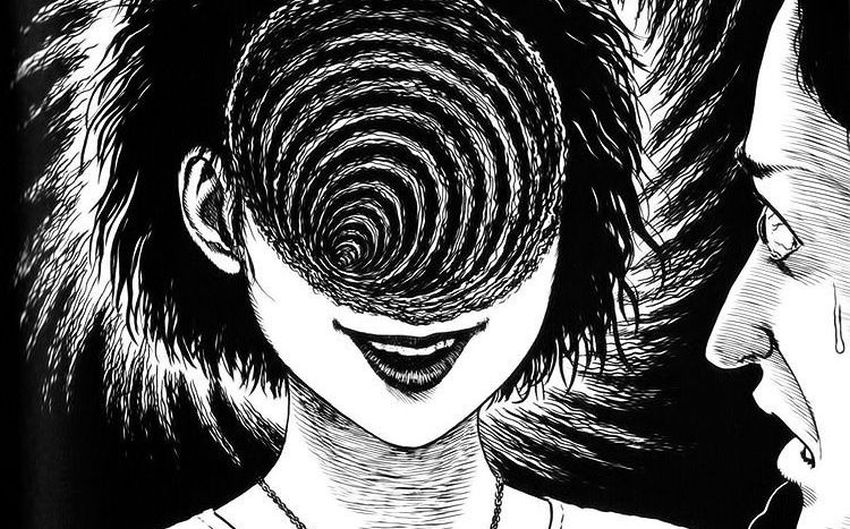
I’ve been a fan of Junji Ito’s work for almost two decades, but Uzumaki will always hold a special place in my heart. It’s not just one of his most famous works, but one of the greatest horror manga ever created. Uzumaki is a towering achievement in the realm of horror manga for how deeply unsettling, but also how creative it is.
A Town Spiraling Into Madness
Uzumaki is set in the small, coastal town of Kurouzu-cho which falls victim to the terrifying and omnipotent curse of the spiral.
At first, the spiral’s influence appears random and almost inconspicuous: whirlpools in the river, odd patterns forming naturally, or spirals appearing in people’s hair. Yet even from the outset, we can feel a foreboding sense of unease that should reach its climax at the end of Uzumaki’s very first chapter. From here on out, the spiral’s influence intensifies in disturbing way, and grotesque transformations become commonplace.
Each incident feels isolated at first, but before long, Kirie Goshima and Shuichi Saitou, Uzumaki’s protagonists, realize a horrifying pattern. All the madness at play in Kurouzu-cho is related to one another, and the spiral’s not the result, but its cause, a destructive, inescapable force.
What Makes Uzumaki So Good?
The true brilliance of Uzumaki lies in its conceptual horror. There are no monsters here, no feasible antagonists, and no traditional villains to confront. There is only an antagonistic force in the shape of the spiral. It’s an idea made flesh, one that turns into an inescapable force that spells doom for all who encounter it.
Each chapter builds on this concept, showcasing the continued influence of the spiral in more and more ways that are as disturbing as they are inventive. For long stretches, Uzumaki’s almost an anthology of spiral related horror stories, witnessed by Kirie and Shuichi.

Junji Ito’s imagination is in full bloom here. People are being twisted into spiral shaped monstrosities, the wonder of childbirth is made nightmare, and an entire town is warped into a mad, spiral-shaped maze. The creativity on display is unmatched. Every new event feels not only visually distinct and unsettling but also ramps up the dread with each consecutive chapter.
Visual and Existential Horror
Its artwork in Uzumaki is among the best, if not the best, of his entire career. His stark black-and-white contrast helps capture the creeping, claustrophobic dread that lingers over Kurouzu-cho, showing that the town’s been doomed from the story’s outset.
His detailed illustrations bring terror to life not only through grotesque transformations and gore but also through his characters’ expressions. Sometimes people appear dejected and stare blankly at others. Sometimes their eyes widen and their faces distort as they are plunged into madness or lose their grip on reality.
Beyond the visceral horror, Uzumaki strikes at something deeper, however: existential horror. The spiral isn’t feasible. It’s not so much a conscious entity with a plan, but an indifferent, cosmic phenomenon. This Lovecraftian theme of humanity’s powerlessness against vast, incomprehensible forces is the heart of Uzumaki’s horror.

Some Weaknesses Worth Mentioning
The episodic structure of the first two volumes helps to build an atmosphere of dread and showcases the spiral’s influence around town. However, it feels almost too much like an anthology, and makes it hard to get invested with any of the characters appearing, and lessens the emotional impact of their demise.
Kirie Goshima, our main character, is almost too passive. She appears nothing more than a witness to the events at play. Perhaps she’s nothing but another helpless victim, or has been under the curse of the spiral since the story’s outset. Yet this is a common problem with Ito’s protagonists. They are less traditional characters with an agency of their own, but more vessel or stand-in for the reader to provide them with a point-of-view to witness the madness at play.
The third and last problem is the manga’s ending. While I found it satisfying, it also tries to give readers a loose explanation of what the spiral curse actually is. This can diminish the sense of mystery that so dominated the earlier chapters. Once again, horror often works best when the unknown stays unknown.
Final Verdict – A Hypnotic Horror Masterpiece
Uzumaki stands apart from other titles as one of the greatest horror manga ever made. While it features copious amounts of gore and jump scares, its horror centers on dread, inevitability, and the terrifying beauty of cosmic forces beyond our understanding.
If you’re a fan of horror manga, of Lovecraftian fiction, or the more surreal and bizarre realm of horror, Uzumaki is an absolute must-read.
Prepare yourself for one of the strangest, most nightmarish journeys horror fiction has to offer.
Looking for more Junji Ito reviews? Check out my in-depth review of Hanging Balloons.
Uzumaki is available in a beautiful omnibus edition, collecting all three volumes into one.

